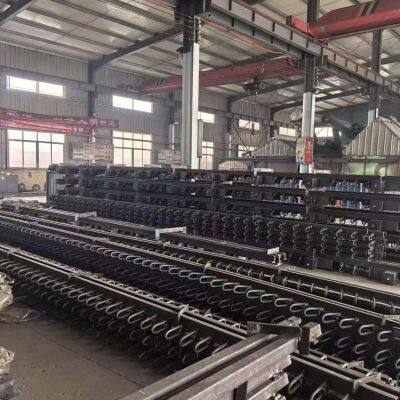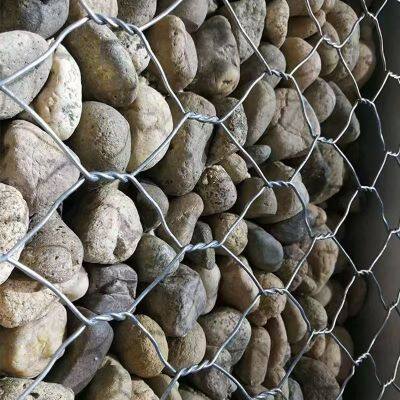Product Description
Gabion mesh Reno mattress for hydraulic flood control, bank protection, lead wir
Introduction to Gabions: A Versatile Geosynthetic Structure
Gabions, also known as gabion baskets or gabion cages, are modular, wire-mesh containers filled with natural stone, gravel, or other granular materials. Widely used in civil engineering, hydraulic engineering, and ecological restoration projects, they combine structural stability with environmental adaptability—making them a preferred solution for erosion control, slope stabilization, and watercourse management. Their design leverages the durability of metal mesh and the natural strength of stone, while their flexibility and permeability address key challenges in dynamic landscapes (e.g., fluctuating water levels, soil settlement). Below is a comprehensive overview of gabions, covering their composition, characteristics, manufacturing, applications, and installation.
1. Core Composition and Material Specifications
Gabions are defined by two key components: the wire-mesh container and the infill material. Each element is selected for performance, durability, and compatibility with project requirements.
1.1 Wire-Mesh Container
The mesh structure forms the "skeleton" of the gabion, determining its strength, corrosion resistance, and lifespan.
Wire Material: High-tensile steel wire is the standard base material, chosen for its load-bearing capacity (tensile strength typically 350–500 MPa). For enhanced durability, wires are treated with anti-corrosion coatings:
Hot-Dip Galvanization: The most common treatment, where wires are dipped in molten zinc (coating thickness 60–100 μm). This protects against rust in freshwater, soil, and mild coastal environments, extending lifespan to 20–30 years.
Galvanized + PVC/Polyester Coating: For harsher conditions (e.g., saltwater, industrial runoff), wires are first galvanized, then coated with a layer of PVC (polyvinyl chloride) or polyester (thickness 0.8–1.2 mm). This dual protection resists chemical corrosion and UV degradation, doubling lifespan to 40–50 years.
Stainless Steel: Used in extreme environments (e.g., acidic soils, marine projects), but is less common due to higher cost.
Mesh Design: Most gabions use a double-twisted hexagonal mesh (also called "hex mesh"), woven by twisting two wires together at each intersection. This design offers superior flexibility and impact resistance compared to welded mesh:
Mesh size: Typically 60mm × 80mm, 80mm × 100mm, or 100mm × 120mm. Smaller mesh (60×80mm) is used for fine infill (gravel), while larger mesh (100×120mm) accommodates larger stones.
Wire diameter: Varies by mesh size and load requirements—typically 2.0–4.0 mm for the main mesh, with thicker wires (3.0–5.0 mm) for edge reinforcements and corner ties.
Container Shape and Size: Gabions are prefabricated into standard modular shapes for easy transport and assembly:
Rectangular baskets: The most common type, with dimensions ranging from 1m × 1m × 0.5m (small) to 4m × 2m × 1m (large). Larger projects use interconnected baskets to form continuous structures (e.g., 100m-long retaining walls).
Cylinders (gabion mattresses): Used for slope protection or riverbed lining, with lengths up to 6m and diameters of 0.3–1.0m.
Custom shapes: Designed for irregular sites (e.g., curved riverbanks, bridge abutments), though standard modules are preferred for cost-effectiveness.
1.2 Infill Material
The infill (typically stone or gravel) provides weight, stability, and permeability to the gabion. Material selection depends on local availability, project function, and structural needs:
Stone type: Hard, durable stones (e.g., granite, basalt, limestone) are preferred, as they resist weathering and breakage. Soft stones (e.g., sandstone) are avoided for high-impact areas (e.g., riverbanks with fast currents).
Stone size: Must be 1.5–2 times the mesh opening to prevent leakage (e.g., 100–150mm stones for 80×100mm mesh). A mix of sizes (graded infill) improves compaction and stability—smaller gravel fills gaps between larger stones, reducing movement.
Quality requirements: Stones should be clean (free of clay, organic matter) and angular (rounded stones may shift over time). For ecological projects, porous stones are selected to promote plant growth and aquatic habitat.
2. Key Characteristics and Advantages
Gabions stand out from traditional rigid structures (e.g., concrete walls, steel sheets) due to their unique combination of strength, flexibility, and environmental compatibility.
2.1 Permeability
The gaps between infill stones and mesh openings allow water to flow through the gabion, rather than pooling behind it. This reduces hydrostatic pressure on the structure—critical for applications like riverbanks or retaining walls, where trapped water can cause cracking or collapse. Permeability also filters sediment, improving water quality downstream and preventing erosion from standing water.
2.2 Flexibility and Adaptability
Unlike rigid concrete, gabions can deform slightly without breaking. This flexibility allows them to adapt to:
Foundation settlement: Common in soft soils, where uneven sinking would crack concrete. Gabions shift with the ground, maintaining structural integrity.
Dynamic forces: Fluctuating water levels, wave impact, or seismic activity (small earthquakes) are absorbed by the mesh and infill, rather than damaging the structure. For example, gabions along coastlines withstand storm surges better than rigid seawalls.
2.3 Durability and Low Maintenance
The anti-corrosion coatings on the wire mesh and the hardness of the infill stone ensure long-term performance:
Galvanized gabions last 20–30 years in freshwater; PVC-coated versions exceed 40 years in harsh environments.
Maintenance is minimal: No painting, sealing, or crack repair is needed. Occasional checks (e.g., removing debris, replacing loose stones) are sufficient, reducing lifecycle costs compared to concrete structures (which require regular patching).
2.4 Ecological Friendliness
Gabions support biodiversity and natural landscape integration— a key advantage over impermeable concrete:
Plant growth: Soil and seeds accumulate in the gaps between stones, allowing grasses, shrubs, or even trees to grow over time. This "greening" of the structure blends it with the surrounding environment and provides habitat for insects, birds, and small mammals.
Aquatic habitat: In river or wetland projects, gabions create sheltered spaces for fish (hiding from predators) and promote the growth of algae and aquatic plants (food sources for wildlife).
Sustainability: Infill stones are often sourced locally, reducing transportation emissions. The wire mesh is recyclable at the end of the gabion’s lifespan, minimizing waste.
2.5 Cost-Effectiveness
Gabions offer lower upfront and long-term costs compared to traditional structures:
Installation efficiency: Modular design allows quick assembly—teams of 2–3 workers can install 50–100 m2 of gabions per day, using basic tools (no heavy machinery like concrete mixers).
Material savings: Local stone infill is cheaper than concrete or steel, and the lightweight mesh reduces transport costs (compared to precast concrete blocks).
Reduced repair costs: Flexibility and durability minimize the need for costly repairs, even in high-stress environments.
3. Manufacturing Process
Gabion production follows a standardized workflow to ensure consistency and quality, from wire drawing to prefabrication:
Wire Drawing: Steel rods are pulled through dies to reduce their diameter to the required size (2.0–5.0 mm). This process strengthens the wire by increasing its tensile strength.
Anti-Corrosion Coating:
Hot-dip galvanization: Drawn wires are cleaned (to remove oil/rust), dipped in a flux bath (to prevent oxidation), then immersed in molten zinc (450°C) for 10–30 seconds. Excess zinc is removed, and the wires are cooled.
PVC/polyester coating: Galvanized wires are heated, then extruded with a layer of PVC or polyester. The coating is cured at high temperatures to ensure adhesion.
Mesh Weaving: Coated wires are woven into double-twisted hexagonal mesh using specialized looms. Each intersection is twisted 2–3 times to lock the wires in place, creating a flexible yet strong structure.
Container Cutting and Assembly: Mesh sheets are cut to size, then folded and joined at the edges using spiral ties (galvanized or PVC-coated steel wire). Corners are reinforced with thicker wires to prevent tearing during filling.
Quality Control: Finished gabion baskets are inspected for:
Coating thickness (using a magnetic gauge for zinc, calipers for PVC).
Mesh size and wire diameter (verified with measuring tools).
Structural integrity (pull tests on mesh intersections and edge ties).
Packaging and Shipping: Gabions are flattened (to save space) and packaged in bundles. Standard modules are shipped via trucks or containers to construction sites.
4. Typical Applications
Gabions are versatile and used across multiple engineering disciplines, from small residential projects to large-scale infrastructure.
4.1 Hydraulic Engineering
Riverbank and Shoreline Protection: Gabions line riverbanks, lakeshores, and coastlines to prevent erosion from currents, waves, or tides. For example, they are used to stabilize the banks of the Nile River (Egypt) and the Mississippi River (USA), reducing sediment loss and protecting nearby farmland.
Channel and Drainage (Remediation): Gabions are used to line drainage ditches, culverts, and stormwater channels. Their permeability allows water to flow freely while filtering sediment, preventing clogs and reducing downstream flooding.
Dam and Spillway Protection: Gabions are placed at the base of dams or spillways to absorb the impact of fast-flowing water, protecting concrete structures from scouring. They also line the beds of spillway channels to prevent erosion.
4.2 Civil Engineering
Slope Stabilization: Gabions are built into retaining walls on steep slopes (e.g., highway embankments, construction sites) to prevent landslides. Their flexibility adapts to soil movement, while their weight holds the slope in place. For example, gabion walls stabilize slopes along the Autobahn (Germany) and highways in the Swiss Alps.
Foundation Reinforcement: In soft soil areas (e.g., coastal plains), gabions are used as a base for buildings, roads, or railways. They distribute weight evenly and prevent settlement by reinforcing the soil.
Noise Barriers: Gabion walls filled with porous stone act as natural noise barriers along highways or railways. The stone absorbs sound waves, while plant growth on the wall enhances aesthetic appeal.
4.3 Ecological Restoration
Wetland and Stream Restoration: Gabions are used to create meandering streams, wetland edges, or fish habitats. Their porous structure allows water to seep through, promoting the growth of aquatic plants and providing shelter for wildlife. For example, gabions were used in the restoration of the Kissimmee River (Florida, USA) to recreate natural river channels.
Mining and Quarry Rehabilitation: Gabions stabilize slopes in abandoned mines or quarries, preventing soil erosion and promoting re-vegetation. They are also used to line drainage ponds, filtering runoff and reducing pollution.
Landslide Recovery: After a landslide, gabions are installed to stabilize the affected area, preventing further soil movement and protecting nearby communities.
4.4 Transportation and Urban Projects
Road and Railway Protection: Gabions line the sides of roads and railways to protect them from erosion (e.g., in mountainous areas) or flooding (e.g., in low-lying regions). They also act as crash barriers, absorbing the impact of vehicles.
Urban Landscaping: Gabions are used in parks, plazas, and residential areas as decorative retaining walls, planters, or seating. Their natural stone appearance blends with green spaces, and plant growth on the walls enhances aesthetics.
Bridge and Abutment Protection: Gabions are placed around bridge piers and abutments to protect them from scouring by water currents. They also stabilize the soil around the foundation, preventing bridge settlement.
5. Installation Process
Gabion installation is straightforward but requires careful planning to ensure structural stability. The process varies by project but follows these general steps:
Site Preparation:
Survey and Marking: The site is surveyed to determine the layout of gabions (e.g., wall alignment, slope gradient). Stakes and strings are used to mark the boundaries.
Excavation: A trench is dug for the gabion foundation—typically 300–500mm deep, depending on soil conditions. For retaining walls, the trench is wider than the gabion (to accommodate backfill).
Leveling and Compaction: The trench base is leveled and compacted (using a vibrating plate or roller) to prevent settlement. For soft soils, a layer of gravel (100–200mm thick) is added for drainage and reinforcement.
Gabion Assembly:
Unfolding and Shaping: Flattened gabion baskets are unfolded on-site and shaped into their rectangular or cylindrical form. Edges are joined using spiral ties (twisted with a tool to secure the mesh).
Interconnection: Adjacent gabions are connected using spiral ties or clips at every 300–500mm along the edges. This creates a continuous structure that acts as a single unit, rather than separate baskets.
Infill Filling:
Stone Placement: Infill stones are placed in the gabion by hand or using a small excavator. Stones are packed tightly to minimize gaps—larger stones are placed first, followed by smaller gravel to fill voids.
Layered Filling: For tall gabions (over 1m), filling is done in layers (300–500mm thick) to ensure even compaction. Each layer is tamped down to prevent shifting.
Quality Check: During filling, the gabion is checked for levelness (using a spirit level) and alignment. Overfilled stones are trimmed, and gaps are filled to ensure the basket maintains its shape.
Capping and Finishing:
Top Capping: Once filled, the top edges of the gabion are folded over and secured with ties to enclose the infill. For retaining walls, a concrete or stone cap may be added for extra protection and aesthetics.
Backfill (for Retaining Walls): Soil is backfilled behind the gabion wall in layers (300mm thick), each compacted to prevent settling. Drainage pipes may be installed behind the wall to further reduce hydrostatic pressure.
Site Cleanup: Excess stones, wire scraps, and debris are removed from the site. Vegetation may be planted around the gabion (e.g., grass seeds on slopes) to enhance ecological integration.
Post-Installation Inspection:
Proper alignment and levelness.
Tight infill (no loose stones or gaps).
Secure connections between baskets.
Drainage (water should flow through the gabion without pooling).
6. Limitations and Precautions
While gabions offer many advantages, they have limitations that must be considered during project design:
Low Load-Bearing Capacity: Gabions are not suitable for supporting heavy structures (e.g., multi-story buildings) or high-impact loads (e.g., heavy traffic). They are designed for erosion control and low-to-medium load applications.
Stone Availability: Infill stones must be locally available to keep costs low. In areas with limited stone resources (e.g., deserts), gabions may be more expensive than concrete.
Vulnerability to Tampering: In urban areas, gabions may be damaged by vandalism (e.g., stone theft, mesh cutting). Installing them in secure locations or adding decorative caps can mitigate this risk.
Size Limitations: Large gabions (over 4m long) are difficult to handle and fill, increasing installation time. Standard modular sizes are preferred for efficiency.
Maintenance in High-Velocity Water: In fast-flowing rivers or coastal areas with strong waves, stones may shift or be washed out over time. Regular inspections and stone replacement are needed to maintain stability.
7. Future Developments
The use of gabions is evolving with advancements in material science and ecological engineering:
Eco-Friendly Coatings: New coatings (e.g., bio-based polymers) are being developed to replace PVC, reducing environmental impact while maintaining corrosion resistance.
Geosynthetic Integration: Gabions are being combined with geotextiles (permeable fabrics) to improve soil retention and plant growth, enhancing their role in ecological restoration.
Smart Monitoring: Sensors (e.g., strain gauges, moisture sensors) are being embedded in gabions to monitor structural stress, water flow, and soil conditions. This allows real-time maintenance alerts, improving long-term performance.
3D-Printed Mesh: Experimental 3D printing of wire mesh is being explored to create custom gabion shapes more efficiently, reducing waste and production time.

Gabion Wire Mesh Water Conservancy Project, Reno Mattress River Regulation, Flood Control, Reinforced Revetment Slope Protection
High Quality Cast Steel/stainless Steel Sewage Treatment Gate Hydraulic Flat Sluice Gate Integrated Sluice Gate
High Quality Cast Iron Stainless Steel Sewage Treatment Gate Hydraulic Flat Integrated Sluice Gate For Fluid Regulation
Dam Water Control Slide Gates Hdpe Sluice Gate Price
Best Stainless Steel Gates for Precise Water Management Penstock Sluice Gates Channel Type Penstock Sluice Gate Valve
Wall Mounted Reservoir Sluice Gate Channel Penstock For Sewage Treatment Plant And Water Diversion Project


Manufacture Wall Penstock Sluice Gate Price
BFV Factory Stainless Steel Square 3-side Seal Penstocks Sluice Gate Wall Mounted Slide Water Gate for Hydraulic Dam Gate
Sluice Gate
Stainless Steel Square Sluice Gate | 3-Side Seal Penstock & Wall Mounted Slide Gate for Hydraulic Dam Systems | Water Control
Heavy Duty Electric Cast Iron and Stainless Steel Sluice/Slide Gates for Water Media Application Durable Gate Valves
Hydraulic Elevator Dam Store Water Irrigate Landscape Flood Control Sluice Dam Gate Penstock Irrigation Sluice Gate
DN500 Zero Leakage Sluice Gate
Industrial Steel Sluice Gates - Heavy Duty Flow Control for Penstock & Irrigation Systems
Industrial Steel Sluice Gates - Heavy Duty Flow Control for Penstock & Irrigation Systems Sluice Gate
Wall Type Stainless Steel Water Gate Penstock Channel Sluice Gate Valve
Stainless Steel Square Sluice Gate 3-Side Seal Penstock Wall Mounted Slide Gate for Hydraulic Dam Systems Water Control
Wall Mounted Sluice Gates Supplier in the Middle East - Dutco Tennant Sluice Gate Model FX4 by Paravalves
Stainless Steel Penstocks Sluice Gate
Flood - Control & Irrigation Iron Sluice Gate - Key Equipment for Wastewater Treatment and Water Conservancy
Sluice Gate Lifting Screw System With Worm Gear Jack Design
Inflatable Core Mold China Bridge's Rubber Inflatable Core Mold for Concrete Pipe Building Culvert Formwork Durable Balloon Inflatable Technology
Inflatable Rubber Core Mold Balloon for Building
China Bridge's Inflatable Core Mold
Inflatable Core Molds Rubber Culvert Balloon Concrete Precast Makers Inflated Rubber Airbag for Pipe Plu Culvert Balloons
Inflatable Core Mold Rubber Balloon Culvert Formwork Inflatable for Concrete Rubber Pipeline Water-plugging Airbag
Rubber Airbag Inflatable Cylindrical Culvert/Concrete Airbag Rubber Inflatable Core Mold for Prefabricated Bridge
For Concrete Building Culvert Formwork Inflatable Rubber Balloon Inflatable Core Mold
Extended Inflatable Core Molds Bridge/ Rubber Inflatable Core Mold/rubber Inflatable Culvert Balloon for Construction
Good Quality High Pressure Inflatable Pipeline Rubber Ballon Inflatable Blocking Rubber Pipe Plug Airbag For Construction
 Wendy
Hi there! Welcome to my shop. Let me know if you have any questions.
Wendy
Hi there! Welcome to my shop. Let me know if you have any questions.







